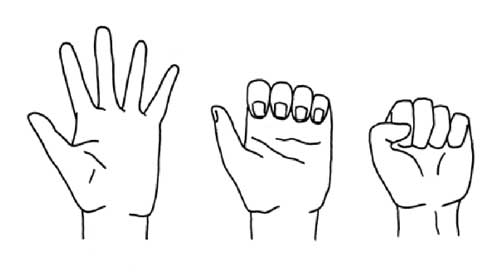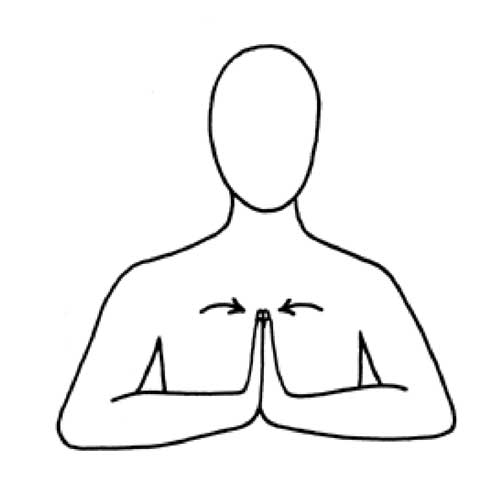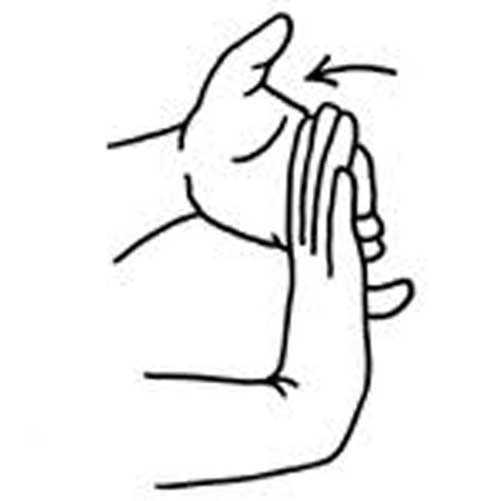Lipo-Lymphoedema Sufferer Discovers Additional Symptom Relief of Osteoarthritis With DEEP OSCILLATION Personal
When Jill Wibberley, a very talented multi crafter, was diagnosed with Osteoarthritis of the hands her options were pain medication (which she already took for Lipo-Lymphoedema) and anti-inflammatories which bring on asthma attacks. In a moment of inspiration, Jill considered what the effect of Deep Oscillation, a tool she already had at her disposal, would be... watch the video to discover just how it helped..
Published on LinkedInPulse 14th November 2018
The results of Jill's subjective results concur with the findings of:
STUDY: DEEP OSCILLATION® OUR EXPERIENCE CONCERNING THE USE OF DEEP OSCILLATION IN THE THERAPY OF OSTEOARTHRITIS
MATERIAL & METHODS:
We analyzed 25 patients admitted in our clinical division between November 2008 - July 2009 with average age 54,64, med. age 53, gender distribution (72% F, 28% M)
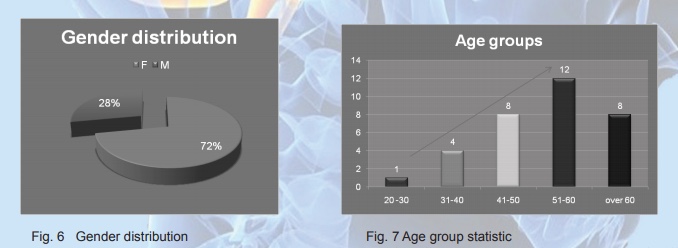
The main pathology treated with Deep oscillation was osteoarthritis for different kind, most of them in column (40%), then on hip (28%), shoulder (16%), knee (12%) and ankle (4%).
The patients received 10 sessions of Deep Oscillation therapy (Hivamat 200) high frequency (100 Hz), for 10 minutes slowly application (to induce vibration feeling, normal mode) over their painful areas in addition to usual care respectively specific medication (anti-inflammatory drugs, analgetics) and/ or physical/ kinetical procedures.
RESULTS
Pain significantly improved in the treatment group, from a baseline average VASP of 6,32 to 1,96 (p = 0.0000) points after treatment;
Additionally to kinetic therapy we obtained a significant increasing of ROM:
- average ROM at admission 74,99%, St dev 10,784
- average ROM at discharge 91,00%, St. Dev 15,424
(p = 0.0000).
The patient satisfaction assessment showed that most patients were content with this therapy: the average satisfaction was 4,44 points, also correlated with the level of a/ d VASP
Other Patient Feedback in Osteoarthritis
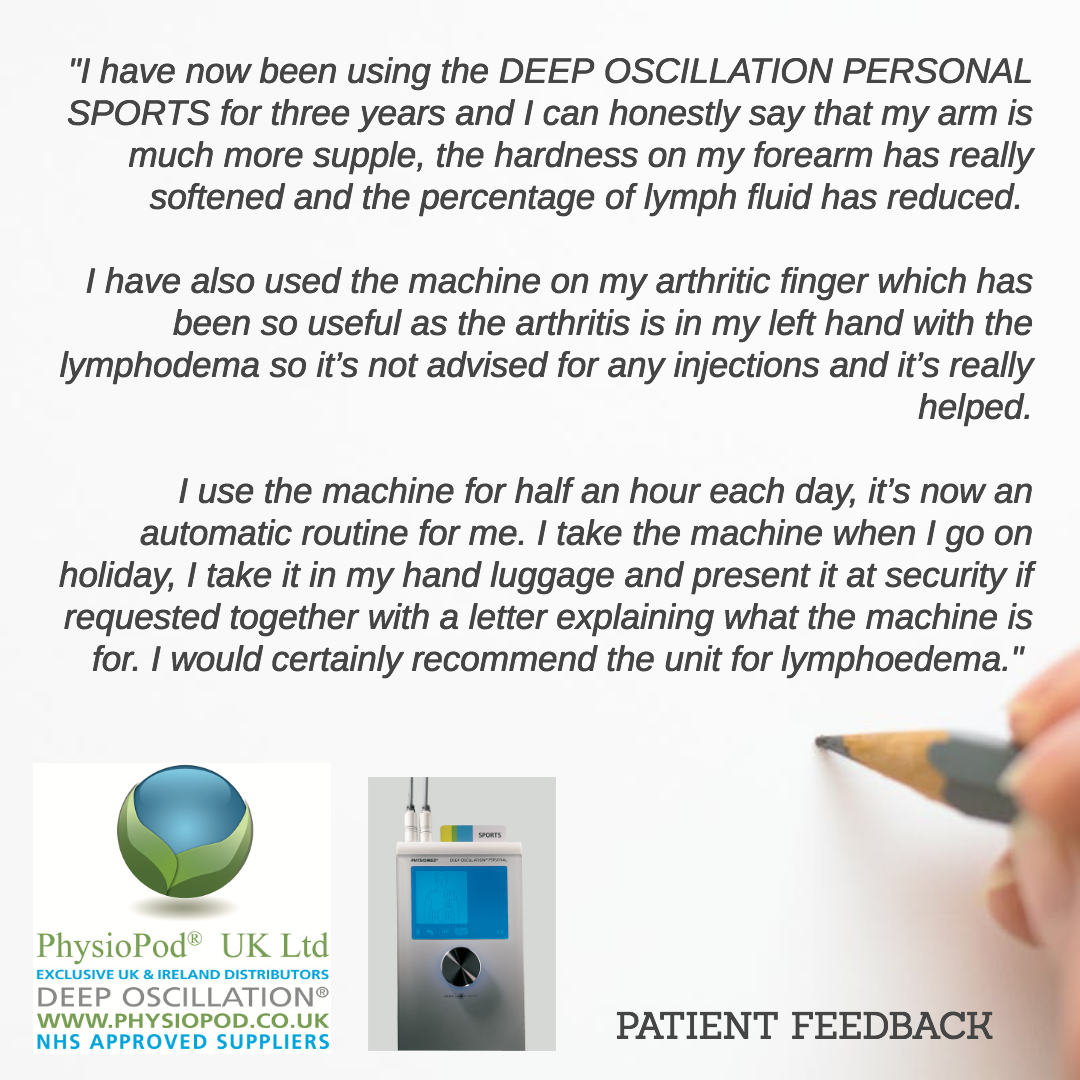
What is osteoarthritis of the hand?
Osteoarthritis often affects three main areas of the hand:
Base of thumb
Joints closest to fingertips
Middle joints of fingers
Fingers may become stiff, painful and swollen and bumps may develop on finger joints. Over time, the pain may decrease and eventually disappear altogether, although the bumps and swelling can remain. Fingers may bend sideways slightly at affected joints or painful cysts (fluid-filled lumps) can develop on the backs of fingers. In some cases, a bump at the base of thumb may develop where it joins the wrist which can be painful and sufferers may find it difficult to perform manual tasks, such as writing, opening jars or turning keys. There's no cure for osteoarthritis, but the condition doesn’t necessarily get any worse over time and a number of treatments are available to help relieve the symptoms.
The main treatments for osteoarthritis include:
Lifestyle measures – such as maintaining a healthy weight and exercising regularly
Medication – to relieve pain
Supportive therapies – to help make everyday activities easier.
In a few cases, where other treatments haven't been helpful, surgery to repair, strengthen or replace damaged joints may also be considered.
How Does Deep Oscillation Help The Symptoms of Osteoarthritis?

Pain Reduction
DEEP OSCILLATION® alleviates pain by reallocating and flushing out pain transmitting and mediating substances. It suppresses inflammation and oedema induced pain by restricting pro inflammatory cell movement to the damaged area, by reducing the inflammatory mediator release, and by oedema reduction.
Mobilization
In chronic pain syndromes and post traumatic conditions reduced mobility often is caused by constricted microcirculation due to increased tone of the muscles encasing capillary vessels. DEEP OSCILLATION® is muscle relaxing, enables optimal metabolism and normalizing of defective nerve function. As a measurable sign range of movement can be obtained or even increased.
Anti Inflammatory
DEEP OSCILLATION® suppresses acute and chronic inflammation by restricting pro-inflammatory cell movement to the damaged area, by reducing the inflammatory mediator release, and by inhibiting water and protein leakage from the blood and lymph vessels.
Tips for keeping hands healthy and making stitching time more enjoyable
With Thanks to Nordic Needles
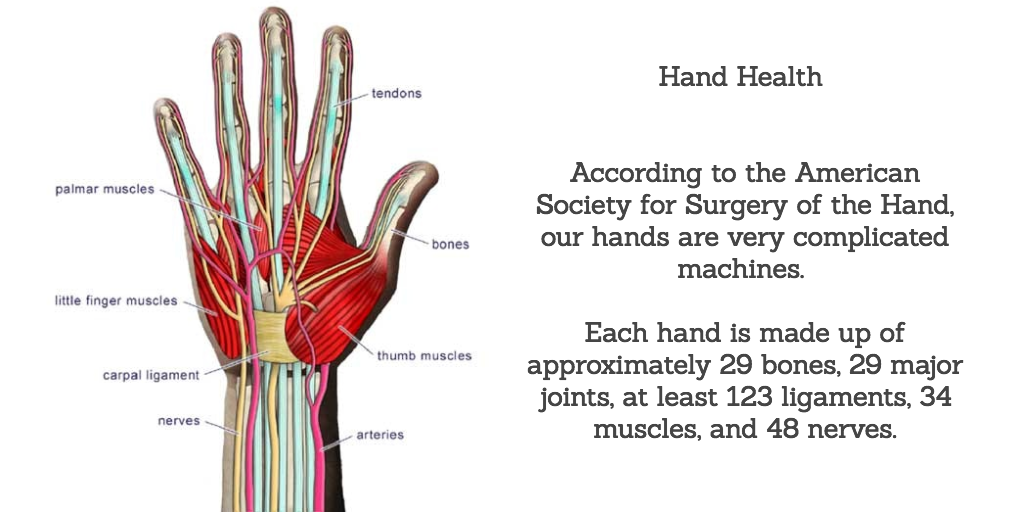
When you are stitching watch your posture - be aware of slouching, awkward cushions or seating, pillows that get in the way, and how you hold your frame and needles. If you find yourself sitting in a position so long that you develop cramps or are sore, try setting a timer to remind you to get up and stretch, or change positions to alleviate unnecessary pressure.
What if we think of our hands in an athletic sense? A 5K course is 3.1 miles long. An average walker will take about 45 minutes to finish the course. That walker is not going to start the 5K without warming up first. Do you remember how many muscles there were in our hands? There is something to be said about building up hand strength and endurance as well, and always being aware of stress on your hands or wrists.
A booklet written by Frederikka T. Payne called Pain Prevention Exercises for Knitters published in 1996 contains a great warm up exercise. She recommends filling a bucket or basin of water with as hot of water as you can comfortably stand. You want to be able to put your arm in up to your elbow if possible. You start by relaxing your hand and letting it soak for two minutes.
Next repeat the first two exercises ten times. Stretch your fingers wide and hold for a count of 5. Then bend your fingertips down and hold for a count of 5. Then push your stretch further by repeating the next two exercises ten times also. Stretch your fingers wide and hold for a count of 5. Make a first and hold for a count of five. Here are the three hand positions: open, fingertips down, fist.
Here are a couple of other exercises that you can do before, during, and after your stitching session.Wrist Stretch: Place your hands in a praying position at chest level with your fingers closed. Then raise your elbows up so they are parallel to the ground. While your hands and elbows are in this position slowly spread your fingers apart, keeping your palms together and then close them again. Repeat this five times.
Wrist Flex: Extend your arm out and bend your hand up. With your other hand, gently bend your wrist back to give it a little stretch. Change hands.
Wrist drop: Just like your thread sometimes your wrists need to “unwind”. Let your arms drop to your sides and gently shake your hands. Slowly rotate your hands in a clockwise circle, then reverse directions.
LONG MAY JILL'S CROSS STITCHING CONTINUE!
“Parts of this article has been extracted from the Nordic Needle weekly e-mail newsletter. Permission was granted to share this article on the PhysioPod website . For information on subscribing to their newsletter, visit www.nordicneedle.com.”
For more information on PhysioPod's product range please click

